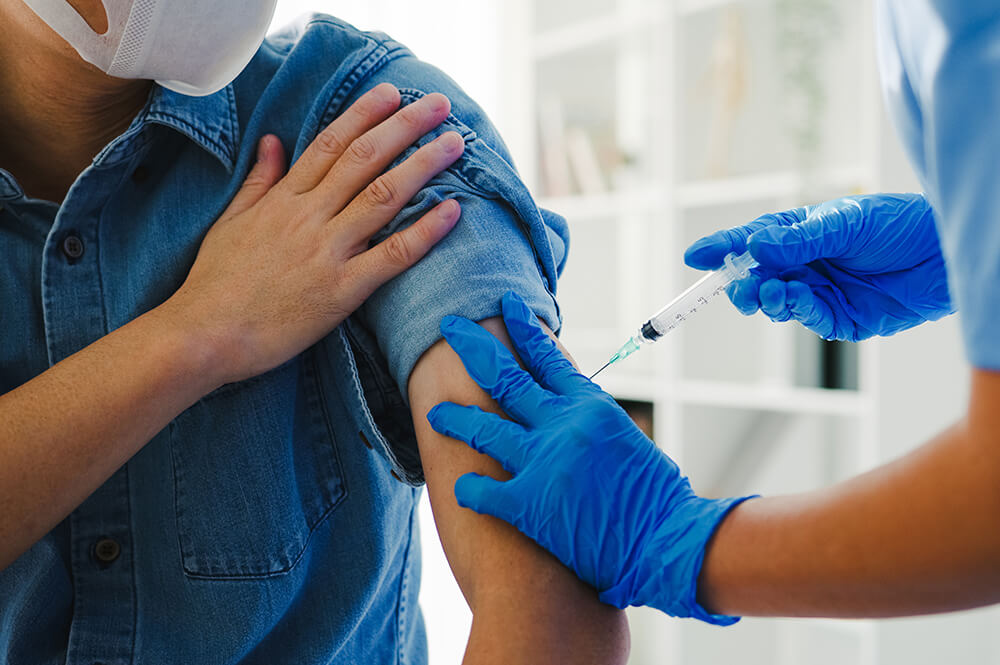Overview of Singapore ageing landscape
Singapore is currently classified as an ageing society, but will soon be an aged society. By 2050, it is projected that the elderly population will make up 35% of the whole population.[i] As people age, their immune system tend to become weaker, which increases the incidence of diseases, such as influenza. In Singapore, the average influenza-associated deaths among adults aged 65 and above is estimated at 167.8 per 100,000 people annually.[ii]
In addition to increased mortality rates of diseases, an ageing population is also projected to increase healthcare costs in Singapore significantly. While a total of 157,000 lost workdays is estimated across the whole population,[iii] the annual healthcare expenditure for the elderly is expected to increase tenfold to SGD 49 billion in 2030[iv]
Tracking the progress of the Singaporean healthy ageing and life-course immunisation agenda
The rate of adult vaccination in Singapore is well behind the WHO goal. For example, influenza vaccination among the elderly population in Singapore is currently between 14-20%.[v]
Currently, there is a consensus that the Singapore government has played and will continue to play an important role in driving a successful national immunisation program. However, there is a need to further leverage and elevate the infrastructure that’s already in place – such as national databases – to conduct targeted and personalised communication with target population groups. Engaging with the private sector as well as providers in primary care settings can also help to further support the uptake of life-course immunisation.
Key challenges and solutions
At a 2022 roundtable discussion among various stakeholders in Singapore, supported by Ageing Asia and Sanofi, experts discussed the key challenges and solutions including:

Importance of awareness and education
Lack of awareness and education spurs from the misperception of vaccination portrayed in the media, the situation where senior citizens obtain information from unreliable and unverified sources, as well as the lack of relevance to the varied backgrounds of the target audience in generic public campaigns

Value of life-course immunisation
Life-course immunisation is rarely featured in preventive care communications. Information related to older adults, such as retirement, chronic diseases and frailty, is also disseminated in silos, which may not leave enough resources to address other pressing health issues such as life-course immunisation.
Materials

Singapore Key Takeaways – ‘The Decade of Healthy Ageing in ASEAN: Role of Life-course Immunisation’
References:
[i] United Nations, Department of Economic and Social Affairs, Population Division (2019). Probabilistic Population Projections Rev. 1 based on the World Population Prospects 2019 Rev. 1. [Online]. Available: http://population.un.org/wpp/
[ii] A. Chow, S. Ma, A.E. Ling, S.K. Chew. ‘Influenza-associated deaths in tropical Singapore.’ Emerg Infect Dis. 2006;12(1):114-121.
[iii] T.P. Ng, K.H. Pwee, M. Niti, L. G. Goh. ‘Influenza in Singapore: assessing the burden of illness in the community.’ Annals of the Academy of Medicine, Singapore. 2002;31(2):182-188.
[iv] Oliver Wyman. (2016). ‘Asia’s $20 Trillion Elderly Medical Bill: Will rising elderly healthcare costs slowly fuel a regional healthcare crisis?’ [Online]. Available: https://www.oliverwyman.com/content/dam/oliver-wyman/v2/publications/2016/dec/RJ6_1_4-Asias- Elderly_Medical_Bill.pdf
[v] Chua A. (2017). MOH introduces new list of recommended vaccine jabs for adults. Today Online. Oct 22. [Online]. Available: https://www.todayonline.com/singapore/moh-introduces-new-list-recommended-vaccine-jabs-adults
